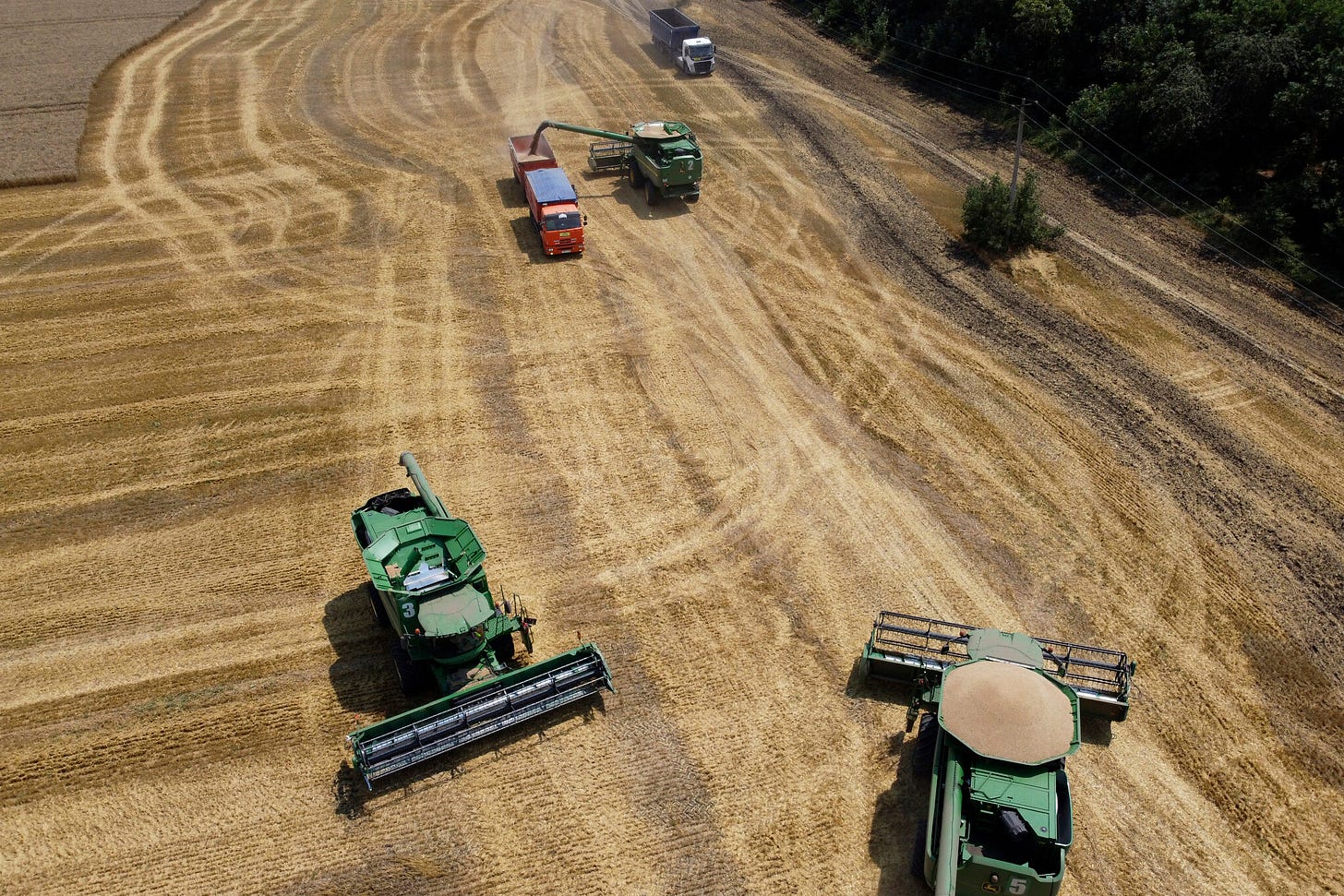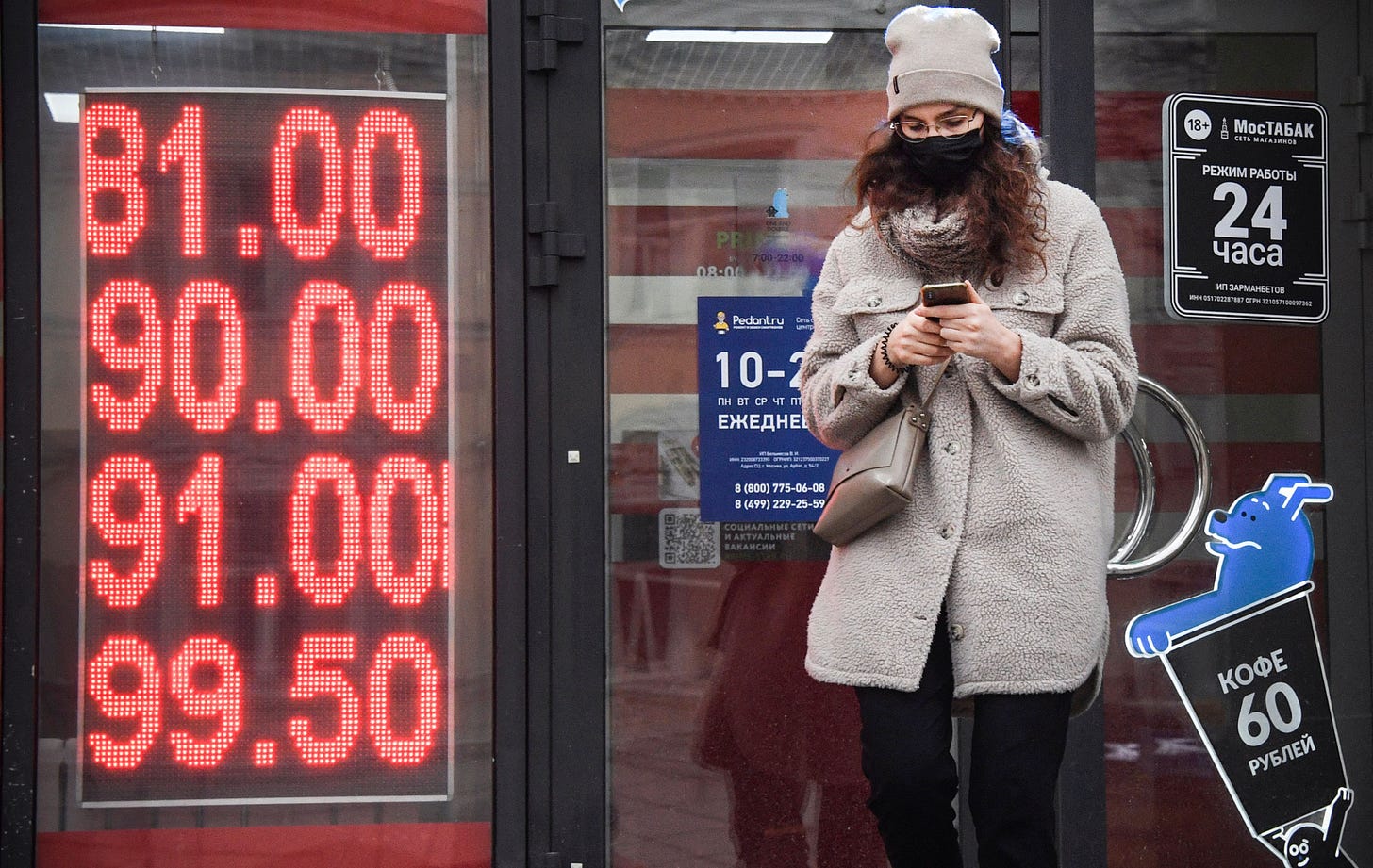TAI's Weekly Wrap: In Russia, Bear (Market) Hunts You
Volatility in the New Normal. Three ETFs can help protect your Portfolio
This Week’s Performance:
Over the past week, most major US indexes were down.
The S&P 500 fell -1.27%
The NASDAQ Composite plunged -2.78%
The DOW dropped -1.30%
The Russell 2000 was down -1.96%
Making sense of February 28th to March 4th
from Alex & AT with TAI
As it enters its third week, the Russia-Ukraine conflict has worsened and could now become a drawn-out conflict that could affect the global economy for years to come.
In just two weeks, Russia has switched its tactics from targeting Ukrainian armed forces to seizing key infrastructure (including ports and nuclear power plants) and bombarding civilian centers. The invasion is becoming a humanitarian crisis as 1.5 million innocent Ukrainians have fled their country.
The West has levied the most severe economic sanctions against Russia since the Cold War. As a result, the Russian Rouble has plunged in value, and the Russian Stock Market lost some 30% of its value before having trading indefinitely halted.
But the US and its NATO allies have avoided direct intervention in the conflict over worries that Russian President Putin uses nuclear weapons, a point of no return.
All the progress of re-integrating Russia into a post-Cold War global economy is evaporating before our very eyes.
And it's not proving to be an easy transition, and the US Stock Market is trying to price in these risks and repercussions. From financials to commodities, the decoupling of Western economies from Russia is causing markets to reassess supply chains and risk exposure.
Unless the Russian people can demand its government change direction, we are looking at a protracted standoff between Russia and the West that could become the new normal.
How does this affect the US?
While the US has limited direct exposure to Russia's economy, the Ukraine conflict is still causing shockwaves across all parts of the US Stock Market.
First and foremost are commodity prices. Russia's role as a significant oil, gas, fertilizer and wheat exporter could create supply shortages in the EU and thus the world.
While Russian energy imports are not banned, European countries are effectively refusing to receive them, while Germany has halted its Nordstream 2 gas pipeline with Russia.
As energy supply compresses, prices rise in Europe. And global producers of oil, natural gas, and food are now looking to redirect their goods to Europe to meet European demand. But this rebalancing causes prices to rise everywhere, including here in the US.
During times of normal inflation (~2%), the US could easily absorb some of these price shocks. Just look to the 2000s.
Before the US invaded Iraq, oil prices averaged $26 per barrel, and inflation averaged 1.58% in 2002. At the end of 2007, after four years of war, oil closed at $99 per barrel, and inflation stood at 2.8%.
The noticeable difference between now and 2007 is inflation. In January 2022, inflation stands at 7.5%. Additionally, interest rates are near zero, which can only go up. Thus the Russian-Ukraine conflict is catching the US at a very vulnerable time, where monetary policy has far less flexibility than in the 2000s.
What does this mean for the Market?
First off, no one can truly predict the future, so take this analysis with a grain of salt. But we can all see that Putin's Russia doesn't intend to de-escalate the conflict, even after sanctions and global condemnation.
As a result, we can expect commodity prices to continue to rise in the near term. Higher levels of price inflation would force the US Government to raise interest rates more quickly than planned, which would decrease the money supply in the US economy.
If the US Government quickens interest rate hikes, investors will continue to flee growth stocks for safe-haven assets. And you can do the same using ETFs.
Exchange-Traded Funds (“ETFs”) are an easy way to diversify your portfolio since they can provide you with access to assets other than stocks—which could be critical right now.
What ETFs should I consider watching to shore up my portfolio?
If your portfolio is primarily stocks (equities), these 3 ETFs are worth watching to diversify your portfolio while generating income:
1. Multi-Asset Diversified Income ETF (MDIV) holds a diverse set of assets like high-yield bonds, real estate, and energy master limited partnerships. MDIV provides high yields (5.03%) that investors can use to offset stock price drops.
2. iShares TIPS Bond ETF (TIP) holds Treasury Inflation-Protected Securities (TIPS), a form of US government debt that pays out a higher rate as inflation increases. Currently, TIP pays out a decent yield of (4.78%) per year.
3. iShares GSCI Commodity Dynamic Roll Strategy ETF (COMT) is a broad-based commodity fund that holds agriculture, energy, and metal commodities. As commodity prices continue to rise, COMT stands to gain.
Since the start of the year, an equally weighted portfolio of COMT, TIP, and MDIV has gained 11.92%. Since the beginning of the Russia-Ukraine Conflict, this portfolio mix has been up 7%.
This is not an investment recommendation. Rather, it’s just an example of how you can use ETFs to truly diversify your portfolio outside of stocks.
Remember diversification is achieved when you invest in different asset classes, not just within different buckets within the same asset class (I.e., stocks). Crypto, in addition to bonds, and commodities, is its own asset class, if that helps.
Now let’s take a look at what drove the Market last week.
Weekly Gainers and Losers
This week's select gainers and losers show how the Market is moving.
The economic fallout from the Russian-Ukraine conflict has caused commodity prices to spike.
Weekly Gainers:
Teucrium Wheat Fund (WEAT): + 28.20%
Wheat spiked due to supply concerns over Russia and Ukraine. The two countries make up 25% of global wheat exports, and Russia's invasion of Ukraine threatens global supply.
SPDR Metals & Mining ETF (XME): + 17.92%
Russia is a large supplier of essential metals, such as iron and aluminum. As Russian sanctions hit the globe, other metal suppliers benefit from a cut-off in competition.
United States Brent Oil Fund LP (BNO): + 15.69%
Russia is a significant exporter of crude oil, producing 5 to 6 million barrels per day. OPEC's reluctance to increase oil supply has triggered price increases for oil, as supply becomes more limited.
Weekly Losers:
VanEck Russia ETF (RSX): -62.83%
Russia's stock market has taken the brunt of economic sanctions as global investors pull out and divest out of the Russian economy. Trading halts have not stemmed investor fear of a Russian economic collapse.
KraneShares Global Carbon Strategy ETF (KRBN): -20.82%
As European countries shun Russian oil, the European Union is hunting for more expensive oil to replenish its energy supply. As a result, decarbonization is less of a priority for Europe, causing carbon credit prices to drop.
iShares MSCI Europe Financials ETF (EUFN): -7.42%
The US and its European allies have shut off Russia from accessing international financial markets. While sanctions are necessary to freeze financing for the Russian government, it also decreases business for European banks.











